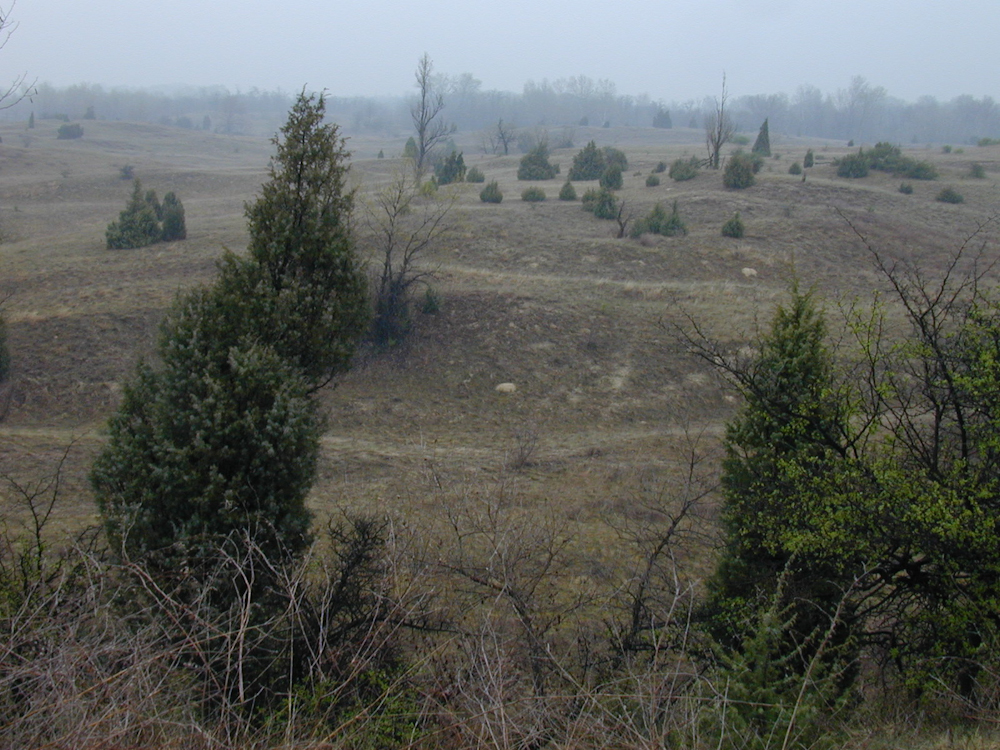- Proposed
- Under Assessment
- Preliminary Assessed
- Assessed
- DDPublished
Geastrum hungaricum Hollós
- Scientific name
- Geastrum hungaricum
- Author
- Hollós
- Common names
 Arechino-hime-tsuchiguri
Arechino-hime-tsuchiguri hvězdovka uherská
hvězdovka uherská Ungarischer Erdstern
Ungarischer Erdstern Дүлий
Дүлий- IUCN Specialist Group
 Mushroom, Bracket and Puffball
Mushroom, Bracket and Puffball- Kingdom
- Fungi
- Phylum
- Basidiomycota
- Class
- Agaricomycetes
- Order
- Geastrales
- Family
- Geastraceae
- Assessment status
- Published
- Assessment date
- 2015-02-04
- IUCN Red List Category
- DD
- Assessors
- Jeppson, M. & Knutsson, T.
- Reviewers
- von Bonsdorff, T., Gonçalves, S.C., Kałucka, I.L. & Dahlberg, A.
Assessment Notes
Justification
Geastrum hungaricum is an earthstar forming extremely small, hygrometric fruiting bodies in steppe and dry grassland habitats on calcareous soils. It has scattered occurrences on the Eurasian continent. It has a concentration of recent records in sand steppe habitats in Hungary and southern part of Slovakia and Czechia. It is reported from 13 localities in southern Russia and in Caukasus. In Asia it is known from scattered records in the Altay region, Mongolia and Hokkaido (Japan). All records are from steppic habitats. A recent record from Central Spain has considerably enlarged its distribution. There are however no reports outside of Eurasia.A historic and ongoing decline in population is expected as land use in steppe habitats changes, overgrazing and erosion in some areas, overgrowth in others due to a decline in grazing. Most important threat is the transformation of steppe habitats into arable land and tree plantations. Its sites in Europe are mostly within the EU Natura 2000 habitat type 6260 (Pannonic sand steppe), which is a priority habitat in the N2000 network. Geastrum hungaricum is considered Critically Endangered in Czechia and Poland. It is protected by law in Hungary and Poland. The centre of distribution seems to be eastern Europe but, taking into account the scattered records from Siberia, Mongolia and Japan, the distribution is probably much wider. It is likely to be a continental steppe species reaching its westernmost outposts in Central Europe with an isolated record in Central Spain. It might be threatened at the global scale. However, the current status of its population in Asia cannot be established due to lack of data. The species is therefore assessed as Data Deficient.
Geographic range
Geastrum hungaricum is an Eurasian species occurring from Western Europe to Japan in Asia. In Europe, it is most prevalent in Hungary, Czechia and southern parts of Slovakia.Population and Trends
Geastrum hungaricum is restricted to steppes or sites with a more or less steppe-like vegetation. There has been a “false” increase of individuals recorded during the last ten years due to an intense interest in earthstars among Central European mycologists. This has resulted in several new localities being identified. However, these new sites are all relic steppe or dry grassland habitats or small (often anthropogenic) refuges adjacent to deteriorated steppe vegetation. The number of individuals of G. hungaricum in these sites is likely to have been much larger in earlier times. Since large steppe areas on the Eurasian continents have been changed into arable land or have been subject to tree plantation (Pinus, Robinia), a considerable declining trend for G. hungaricum can be expected. Its main habitat in Europe is the Natura 2000 habitat type 6260, which is a priority habitat within the EU. Data on the decrease of the pannonian steppe are available, showing that the habitat has decreased by 90% in the last 100 years.
The number of known localities are as follows; Czechia (< 10 localities where it is observed every year), Germany (1 old record) Hungary (ca 20 localities observed every year), Poland (1 old record), Slovakia (1 recent locality), Spain (1 recent record, Zamora et al. 2015). It is reported from southern Russia (Rostov-area 3 localities, Astrakhan’-area 3 localities, Volgograd-area 3 localities, Kalmukia Republic 4 localities) and Caucasus. In Asia it has reports from Russia (Siberia, Altay, one recent locality), Mongolia (1 locality) and in Japan (1 recent locality).
Population Trend: decreasing
Habitat and Ecology
Geastrum hungaricum is a saprotrophic fungus adapted to dry and warm, treeless steppe habitats. Most European records are from continental calcareous sandy habitats (Natura 2000 habitat 6260). It seems to be favoured by a moderate soil disturbance, such as trampling of grazing animals or human activity, and is hence often found along tracks and paths. These habitats seem to have a long continuity of present land use (mostly grazing). In some places where steppe vegetation has been transformed into tree plantations or changed into arable land, this species can survive for a long time in exposed wasteland or along road verges, provided the micro-climate is sufficiently dry and warm.Hungary has some of the species' richest occurrences globally on sand steppe localities, having survived thanks to the use of these areas as military training fields. In the European part of Russia it is on record from grazed, sandy steppe habitats, and from Caucasus on a high altitude sandy and gravelly mountain steppe locality. The recent finding of the species in Japan was made among mosses on coastal sand dunes on the northern coast of Hokkaido.


